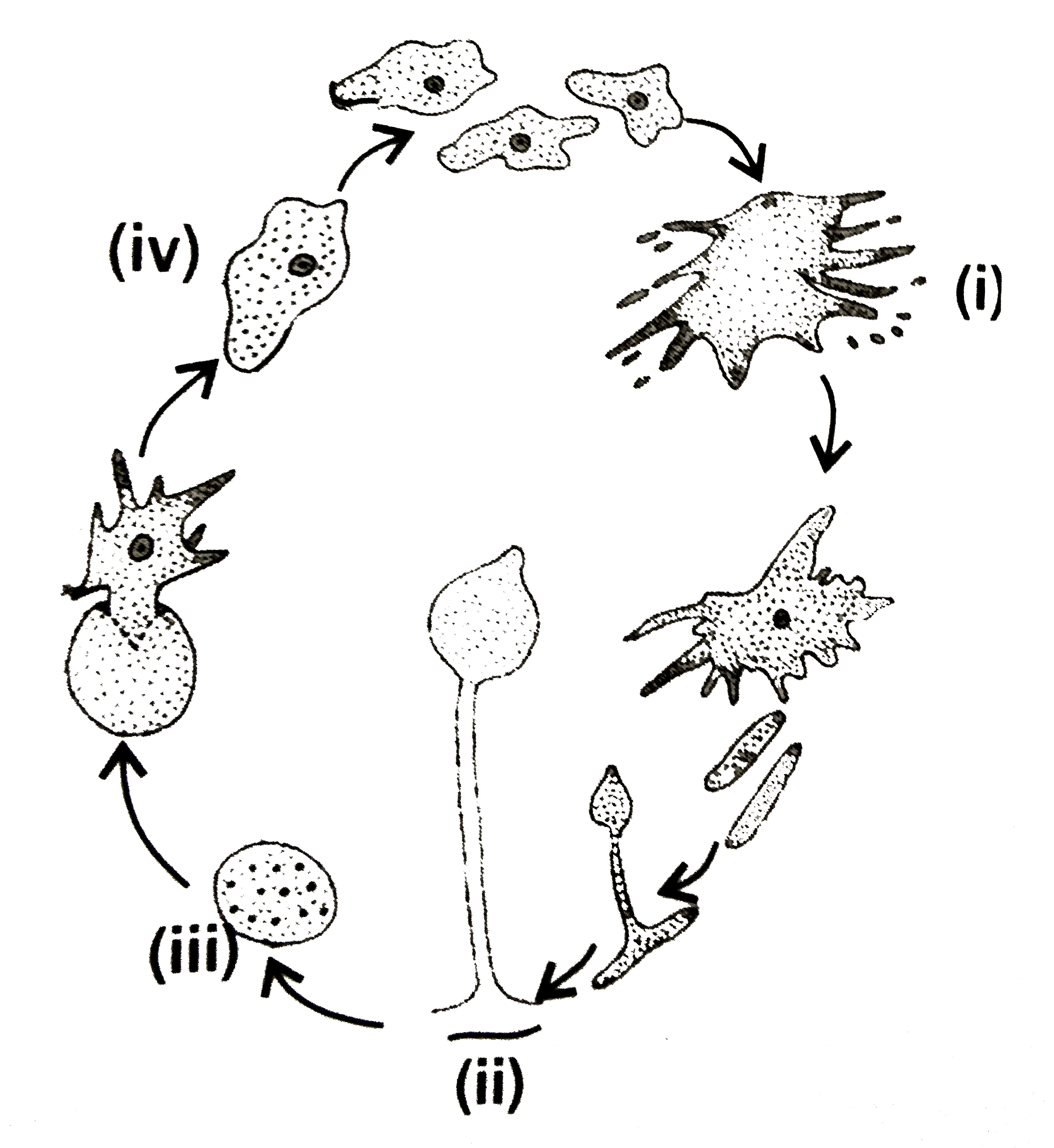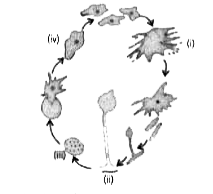Study the given life cycle of cellular slime moulds and select the incorrect option.
 P. Structure (i) is formed in response to drought conditions and exhaution of food supply.
P. Structure (i) is formed in response to drought conditions and exhaution of food supply.
Q. Structure (ii) represents myxamoeba, which rounds off and is converted to a spore.
R. (iii) are uninucleate, haploid sturctures without any cell wall.
S. (iv) are uninucleate, haploid structures possessing a conspicuous xwll qLL. Solution in Odia
P and Q
R and S
P,Q and S
Q,R and S
The correct Answer is:D
(i)represents pseudoplasmodium. In dry soils, when food supply is exhausted, the haploid amoeboid cells aggregate (without fusion) to form a multicellular plasmodium called pseudoplasmodium. The pseudoplasmodia move as a coordinated unit.(ii)is the mature fruiting body called sporocarp.It bears a single sporangium at its tip.Unlike plasmodial slime moulds, the sporangia of cellular slime moulds are naked.The stalk of the sporangium is straight or slightly curved.(iii)represents spore.Each spore is an ovoid, haploid, uninucleate mass of protoplast covered by a cellulosic cell wall.Spore germinates of produce a single naked amoeba like cell called myxamoeba [shown by (iv)].Myxamoebae are uninucleate, haploid cells, lacking a cell wall but covered by a plasma membrane.
Similar Questions
Single-celled uninucleate form of slime mould is called
View Solution____________ is the structure inside which spores of bread mould are formed.
View SolutionIn the life cycle of cellular slime moulds, there is complete absence of
View SolutionThe spores produced in capsule in moss, germinate to form haploid structure called
View Solutionदिए गए कोशिकीय स्लाइम मोल्ड्स के जीवन चक्र का अध्ययन करें तथा गलत विकल्प का चयन करें।

P. संरचना (i) सूखे की परिस्थितियों एवं खाद्य-आपूर्ति के समापन की प्रतिक्रिया स्वरूप बनती है।
Q. संरचना (ii) मिक्सअमीबा को दर्शाती है, जो गोल होकर स्पोर में परिवर्तित हो जाता है।
R. (iii) एककेन्द्रकीय, बिना कोशिका भित्ति वाली अगुणित संरचनाएं हैं।
. (iv) एककेन्द्रीय, विशिष्ट (Conspicuous) कोशिका भित्ति वाली संरचनाएँ हैं।
View SolutionAcellular slime moulds show (a) Haploid uninucleate plasmodium (b) Naked sporangia (c) Autotrophic nutrition (d) Isogamous type reproduction
View SolutionThe structure formed in the life cycle of cellular slime-mould due to chemotactic movement is
View SolutionIn the life cycle of cellular slime moulds, there is complete absence of
View Solution